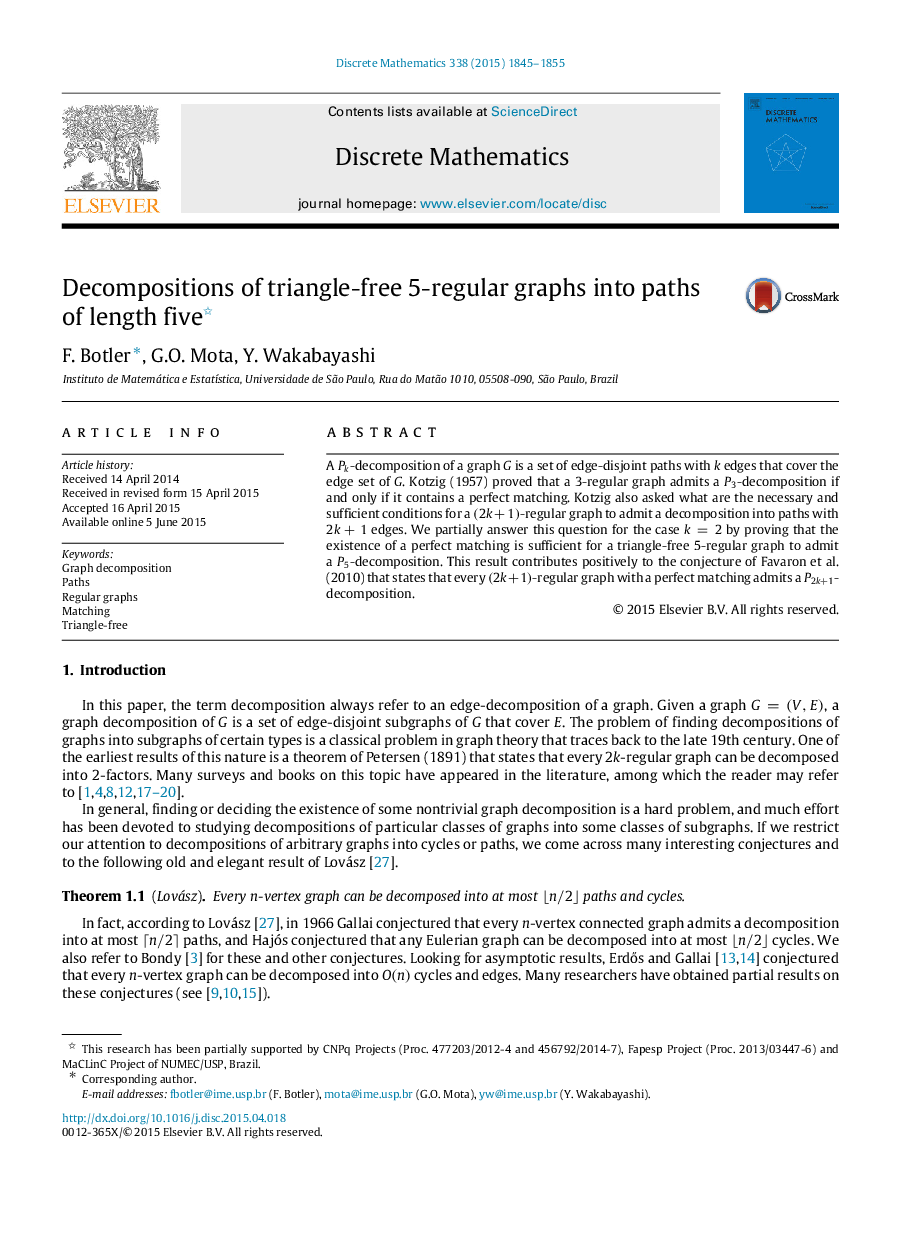| Article ID | Journal | Published Year | Pages | File Type |
|---|---|---|---|---|
| 6423287 | Discrete Mathematics | 2015 | 11 Pages |
Abstract
A Pk-decomposition of a graph G is a set of edge-disjoint paths with k  edges that cover the edge set of G. Kotzig (1957) proved that a 3-regular graph admits a P3-decomposition if and only if it contains a perfect matching. Kotzig also asked what are the necessary and sufficient conditions for a (2k+1)-regular graph to admit a decomposition into paths with 2k+1  edges. We partially answer this question for the case k=2 by proving that the existence of a perfect matching is sufficient for a triangle-free 5-regular graph to admit a P5-decomposition. This result contributes positively to the conjecture of Favaron et al. (2010) that states that every (2k+1)-regular graph with a perfect matching admits a P2k+1-decomposition.
Related Topics
Physical Sciences and Engineering
Mathematics
Discrete Mathematics and Combinatorics
Authors
F. Botler, G.O. Mota, Y. Wakabayashi,
